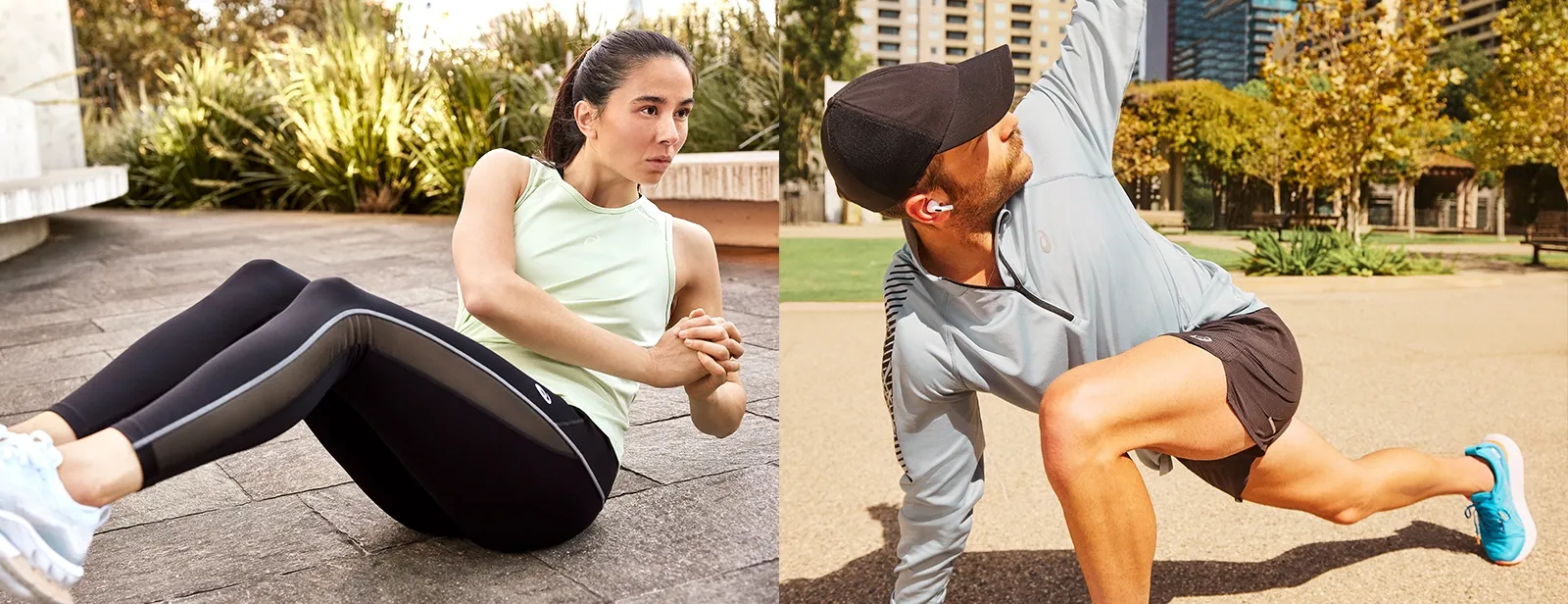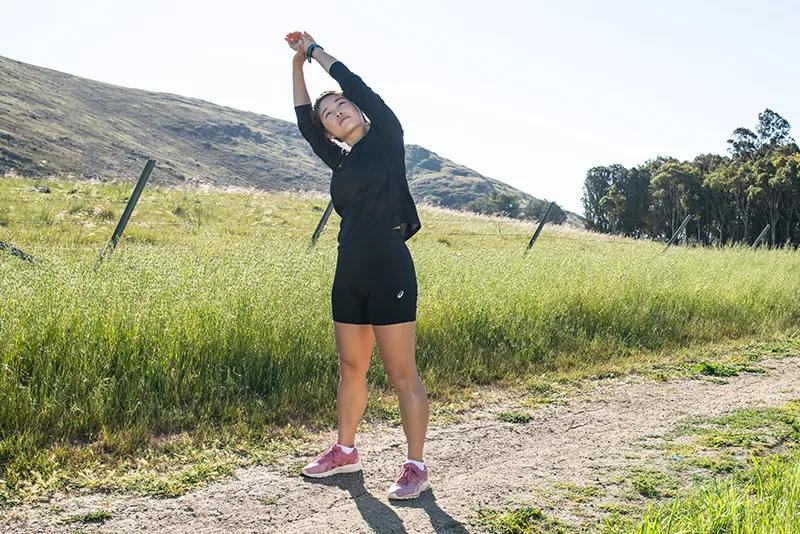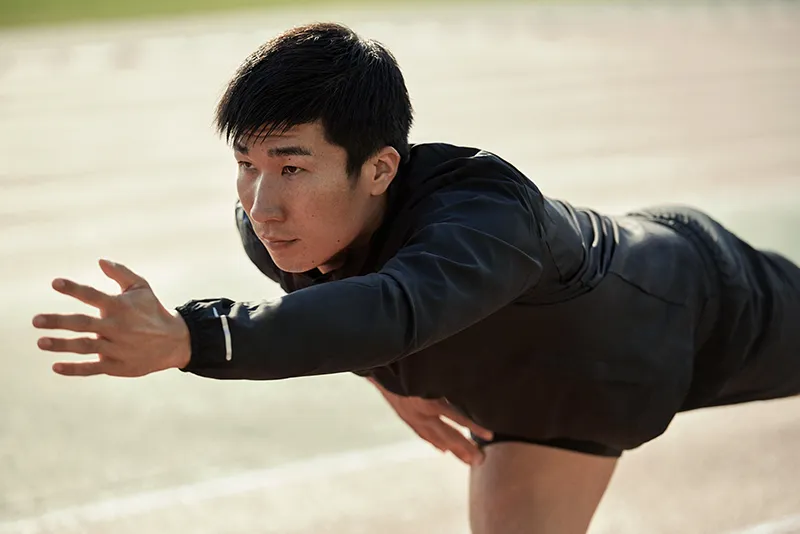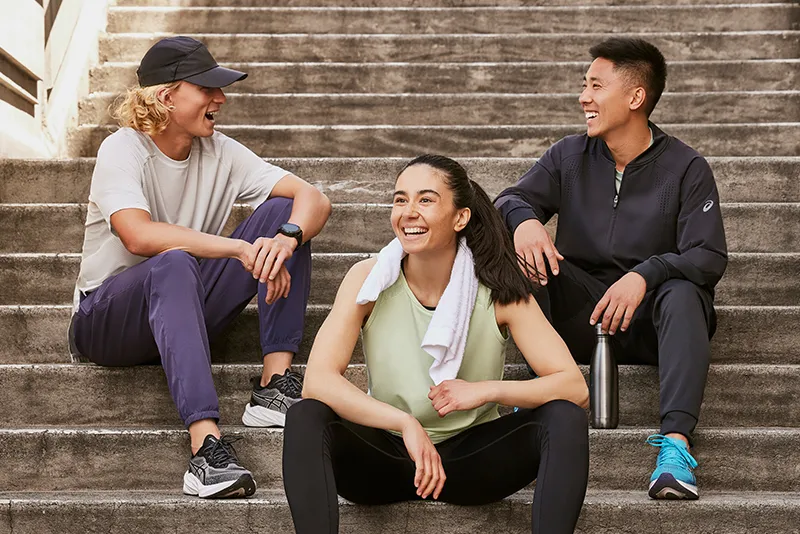
Core Exercises for Runners
August 17, 2023
Learn why a strong core is essential to your running performance and impacts your strength and endurance. Use these five core exercises to get started.
Most of the training for running consists of different running workouts throughout the week as well as rest days. Much of your training will consist of running that is intended to help you reach your goals and push past personal bests. Your core strength is an essential factor that will allow you to progress in the sport, so it's optimal to take time to build and maintain your core strength outside of your runs. A strong core can help you run more efficiently, prevent injury, and increase your speed and endurance.
Benefits of a Strong Core
A strong core will allow your glutes to function properly in relation to your knees, ankles, and feet, which can decrease the risk of injury and help you achieve proper form on your runs. A strong core can lead to better form, which can lead to better endurance and speed, thus allowing you to plow through plateaus and reach your goals. The core stabilizes all of the structures in the body and keeps your body in the correct alignment for running. The core muscles also offer protection for the lower back and reinforce other mechanisms in the body, which decreases impact on the body, leading to fewer injuries.

What Is the Function of the Core?
The core helps align all of the bones and muscles in your upper and lower body. The strength and endurance of your core stabilize your trunk and are tied to the power production that is created in the lower body. The core is very involved with the function of your back muscles and lower body so there is a requisite level of strength needed to perform athletically. Since the core is such an integral part of physical activity, here are a few core exercises that are beneficial to runners.

Bird Dogs
Bird dogs involve the abs, lower back, glutes, and leg muscles. This is a dynamic core exercise that can be used on its own or as part of a warmup or mobility work. Get down on all fours with your knees hip-width apart and your hands shoulder-width apart. Engage your abs and keep your back straight as you extend your left arm and right leg out straight. Hold for three to five seconds, lower, and do the same with your right arm and left leg. This is one rep; aim for five.
Anti Rotation Band Holds
You'll need an elastic band for this exercise. Loop it on a sturdy post, fence, workout bench, or other structure, and you walk out away from it, standing parallel to the band. Stand with a straight back, engaged core, and feet hip-width apart. Hold your arms out straight in front of your chest to resist the band's pull, and hold for 30 seconds. Repeat on the other side. This is a great one to align your core and will build your abs' ability to stabilize the trunk. The anti-rotation hold is also a simple exercise for beginners who can work their way up in resistance as they get stronger.

Plank With Leg Raises
Since running is a dynamic activity that involves constant movement, this is a core exercise that more accurately simulates the impact of running on the body. This is a typical plank where you alternate raising your feet into the air a few inches. Get into a plank position with shoulders above your wrists and a flat back. Squeeze your glutes and abs, then alternate raising your left leg and then right leg just a few inches from the floor. The longer you hold a lift, the more you work your core.
Side Plank
This is another core exercise that focuses on the firing of the glutes and the obliques, which are very important to how your body moves when running. You can pair these up with regular planks to work every part of the core. Get into a side plank position by laying on one side, raising to a straight arm or on your elbow, and pressing your bottom leg to the floor. Raise and lower your top leg. Focus on keeping your body in a straight line so your hips don't sag. Repeat on the other side.
Modified Bicycle
This is similar to the bicycle core exercise that you may already be familiar with, but instead of bicycle motion, you would switch your legs similar to how you would be striking the ground when running. This is to give you a bit more functional exercise that has more carryover to the sport while also building up the lower part of your core and the stabilizers responsible for aligning your body. Lie on your back and raise one leg so that it is perpendicular to your body but your shin is parallel to the ground. Raise the other leg so it is a few inches from the floor. Hold this position for two to three seconds, then switch legs, as in a bicycle motion. Keep your back pressed to the ground and your abs engaged.

Building a Routine
Many of these core exercises are low impact enough that you can do them as a warmup before your running. If you mix in a bit of this core work throughout the week or dedicate one to two days to strength work, you will likely see gains in your running. Activating the core can be a great way to improve your strength, endurance, and performance for running.